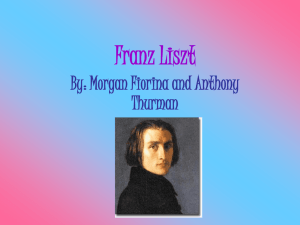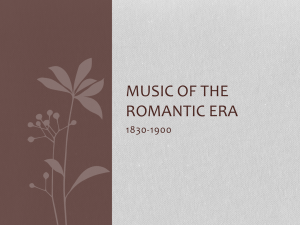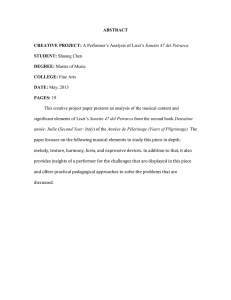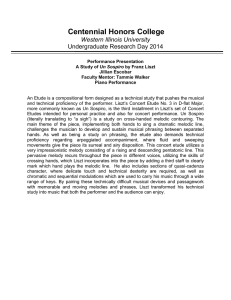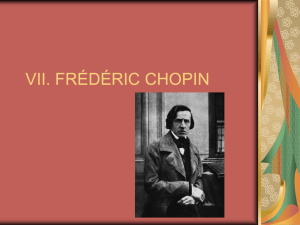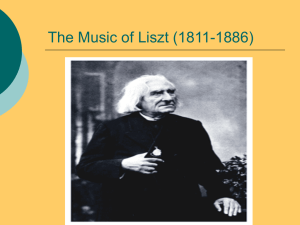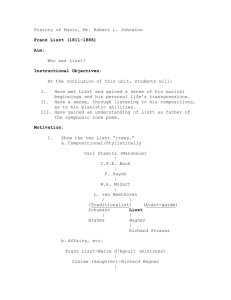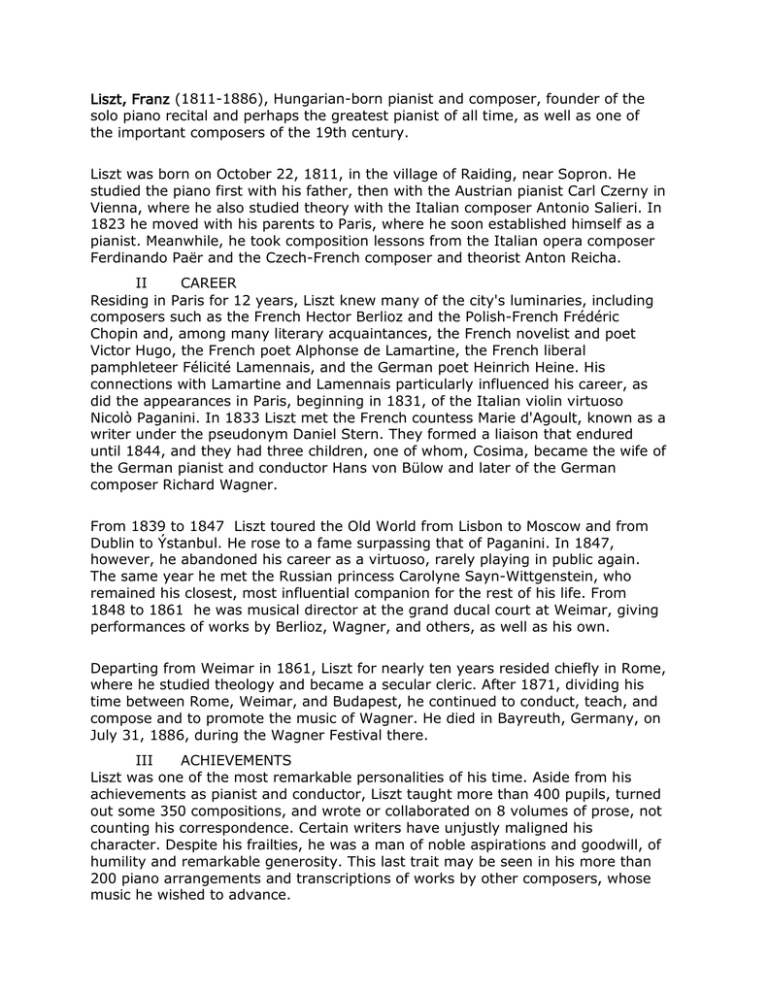
Liszt, Franz (1811-1886), Hungarian-born pianist and composer, founder of the
solo piano recital and perhaps the greatest pianist of all time, as well as one of
the important composers of the 19th century.
Liszt was born on October 22, 1811, in the village of Raiding, near Sopron. He
studied the piano first with his father, then with the Austrian pianist Carl Czerny in
Vienna, where he also studied theory with the Italian composer Antonio Salieri. In
1823 he moved with his parents to Paris, where he soon established himself as a
pianist. Meanwhile, he took composition lessons from the Italian opera composer
Ferdinando Paër and the Czech-French composer and theorist Anton Reicha.
II
CAREER
Residing in Paris for 12 years, Liszt knew many of the city's luminaries, including
composers such as the French Hector Berlioz and the Polish-French Frédéric
Chopin and, among many literary acquaintances, the French novelist and poet
Victor Hugo, the French poet Alphonse de Lamartine, the French liberal
pamphleteer Félicité Lamennais, and the German poet Heinrich Heine. His
connections with Lamartine and Lamennais particularly influenced his career, as
did the appearances in Paris, beginning in 1831, of the Italian violin virtuoso
Nicolò Paganini. In 1833 Liszt met the French countess Marie d'Agoult, known as a
writer under the pseudonym Daniel Stern. They formed a liaison that endured
until 1844, and they had three children, one of whom, Cosima, became the wife of
the German pianist and conductor Hans von Bülow and later of the German
composer Richard Wagner.
From 1839 to 1847 Liszt toured the Old World from Lisbon to Moscow and from
Dublin to Ýstanbul. He rose to a fame surpassing that of Paganini. In 1847,
however, he abandoned his career as a virtuoso, rarely playing in public again.
The same year he met the Russian princess Carolyne Sayn-Wittgenstein, who
remained his closest, most influential companion for the rest of his life. From
1848 to 1861 he was musical director at the grand ducal court at Weimar, giving
performances of works by Berlioz, Wagner, and others, as well as his own.
Departing from Weimar in 1861, Liszt for nearly ten years resided chiefly in Rome,
where he studied theology and became a secular cleric. After 1871, dividing his
time between Rome, Weimar, and Budapest, he continued to conduct, teach, and
compose and to promote the music of Wagner. He died in Bayreuth, Germany, on
July 31, 1886, during the Wagner Festival there.
III
ACHIEVEMENTS
Liszt was one of the most remarkable personalities of his time. Aside from his
achievements as pianist and conductor, Liszt taught more than 400 pupils, turned
out some 350 compositions, and wrote or collaborated on 8 volumes of prose, not
counting his correspondence. Certain writers have unjustly maligned his
character. Despite his frailties, he was a man of noble aspirations and goodwill, of
humility and remarkable generosity. This last trait may be seen in his more than
200 piano arrangements and transcriptions of works by other composers, whose
music he wished to advance.
Liszt was one of the 19th century's harmonic innovators, especially in his use of
complex, chromatic chords. He was an innovator also with respect to form,
especially in his technique of thematic transformation, later known as leitmotiv.
This technique and his chromatic harmony strongly influenced Wagner and
Richard Strauss. His compositions for the piano inaugurated a revolutionary,
difficult playing technique that gave to the piano an unprecedented variety of
textures and sonorities. Among his well-known works for the piano are the Sonata
in B Minor (1853), the 12 Transcendental Etudes (1851), the 20 Hungarian
Rhapsodies (1846-1885; no. 20 unpublished), Six Paganini Etudes (1851),
Concerto No. 1, in E-Flat (1849; revised 1853), Concerto No. 2, in A-Major (1848;
revised 1856-1861), and the character pieces making up the three-volume Years
of Pilgrimage (1855, 1858, 1877). Some of these last, representing nature
scenes, anticipate the impressionism of the French composer Claude Debussy.
The orchestral works include, besides the Faust and Dante symphonies (both
1857), 13 examples of the symphonic poem, a genre of program music that
Berlioz invented and Liszt named; Les préludes (1854), the best known, is based
on a poem by Lamartine. Although the ultimate value of Liszt's large output
remains uncertain, its originality is unquestioned; in harmony and form, his later
compositions foreshadow music of such 20th-century composers as the Austrian
Arnold Schoenberg and the Hungarian Béla Bartók.
Contributed By:
Alexander Main
1
1"Liszt, Franz."Microsoft® Encarta® Encyclopedia 2001. © 1993-2000 Microsoft Corporation.
All rights reserved.

